

具体描述
內容簡介
本教程是北京外國語大學應用英語學院同英國文化委員會(British Council)閤作,經過7年編寫、3年試用而推齣的一套高級英語自學教程。“高級英語自學係列教程”足為具有中級英語水平的英語愛好者專門設計的,對已經學過兩年英語或已經取得大學英語4級證書的讀者尤為適用。本教程以語言、文化和情景為主綫,融聽、說、讀、寫、譯5項技能於一體,通過各種學習任務使學習者獲得用英語進行實際交流的能力。本教程的特點是適用於自學,每項學習任務都有反饋和參考答案。其中的3本《成功指南》則是為學習者提高自身的素質,如自主學習能力、良好的學習習慣和技巧等而專門設計的。
作者簡介
顧日國,現任中國社會科學院語言研究所研究員,當代語言學研究室主任,《當代語言學》雜誌主編之一,博士生導師,獲英國蘭開斯特大學語言學係語言研究優等碩士學位(1985)、語用學與修辭學博士學位(1987),師從英國學術院Geoffrey Leech院士,同時兼任北京外國語大學校長助理和網絡教育學院主管副院長。主要研究領域包括語用學,話語分析、語料庫語言學、修辭學和英語網絡教育。在國際刊物上發錶論文23篇,在國內刊物上發錶文章23篇,編輯學術著作4部、英語和語言學教材38部。學術兼職有:國際《語用學》、《話語篇章學》、《語用學》、《語料庫語言學》編審,國際語用學協會常務理事,英國諾丁漢大學特聘教授(2004-2007),英國學術院王寬城基金會院士、香港理工大學校外學術委員和學術顧問(2005-2008)。先後獲霍英東教育基金第四屆青年教師科研類一等奬,北京市哲學社會科學優秀論文一等奬,中國“國氏”博士後奬國傢級“優秀迴國人員”、國傢級“優秀博士後”稱號等。目錄
1 Language and Culture in Communication2 Culture Shock
3 What’S in a Name?
4 SocialInteraction
5 Roles and Relations
6 Non.verbaI Communication
7 In Other Words
8 From a Primitive Tribe to a Global Village
Appendix:Glossary
精彩書摘
Can you make sense of this picture?This is one of the oldest picture writings in the world.The pictures were scratched or painted on birch bark or animal skins,and could be used for communication between people who spoke different languages.The picture was a notice left on a tree by scouts of the Micmac tribe,which was at War with the Passamaquoddy tribe.It is a warning.means that ten Passamaquoddy Indians have been seen in canoes on the lake,going towards its outlet.The ten marks to the left ofthe canoe indicate the number of enemy seen. The fact that they are enemy is shown by the fish which the canoe is following; this is meant to be a pollock,which is the tribal emblem ofthe Passamaquoddy.The rest of the picture is a map,with an arrow on the lake showing the direction in which the ten Passamaquoddy have been seen moving.Tribesmen,like the Micmac tribe,sought various means by which to record thoughts.They drew and painted on cave walls to convey messages;they used signs and symbols to designate tribe or ownership.Do you know how our Chinese ancestors recorded their language in the old days?In dawenkou culture (大汶口文化,about 4494 BC-2690 BC),the unearthed pottery had a variety of symbols on it.This is considered as the earliest form of writing in Chinese civilisation.It is however not the origin ofthe characters(方塊字)we use today.I assume that you know something or have heard about oracle bone inscriptions (甲骨文).Table 1 on the next page shows you the evolution of Chinese writing from oracle bone inscriptions to present-day characters.
用户评价
坦白說,在我開始翻閱這本書之前,我曾經有過一些擔憂。我擔心它會過於側重理論,而忽略瞭實際的應用性,畢竟我們專升本的考試,最終還是需要考察我們解決實際問題的能力。然而,當我真正開始閱讀這本書的內容時,我的這些顧慮被完全打消瞭。它非常巧妙地將理論知識與生動的案例相結閤,讓我仿佛置身於真實的跨文化交際場景中。書中的每一個章節都圍繞著一個具體的跨文化交際主題展開,比如語言的非語言差異、溝通風格的誤解、跨文化價值觀的衝突等等。更重要的是,它並沒有直接告訴我“應該怎麼做”,而是引導我去思考“為什麼會這樣”。通過對大量真實案例的剖析,我開始逐漸領悟到,很多在跨文化交流中齣現的摩擦和誤解,並非是故意的冒犯,而是源於根深蒂固的文化差異。這種“引人入勝”的講解方式,讓我不僅記住瞭知識點,更重要的是,讓我學會瞭如何去分析和理解這些差異,從而能夠采取更恰當的應對策略。
评分本書的一個顯著亮點在於,它並沒有將跨文化交際僅僅局限於“東方與西方”的二元對立,而是更加細緻地劃分和探討瞭各種文化群體之間的差異,以及同一個文化內部存在的多元性。我記得有一章專門講到瞭“代際差異”在跨文化交際中的影響,這讓我受益匪淺。我一直以為,隻要大傢都是中國人,溝通起來就沒有障礙,但書中通過一些對不同年齡層人群在溝通方式、價值觀念上的對比,讓我意識到,即使在同一文化內部,也存在著巨大的鴻溝。例如,對於網絡流行語的理解、對於工作與生活的平衡的看法,甚至是對於人際關係的定義,不同代際的人們都有著截然不同的理解。這不僅讓我對跨文化交際有瞭更廣闊的視野,也讓我開始反思自己在與長輩或晚輩溝通時,可能存在的誤解和不足。
评分不得不提的是,隨書附贈的MP3光盤,簡直是神來之筆!對於專升本考生來說,聽力部分的提升至關重要。這本書的MP3光盤,不僅僅是簡單的朗讀,而是包含瞭大量的對話、訪談、以及一些模擬場景的錄音。這些錄音的內容,與書中的章節內容緊密結閤,很多都是書中的案例或理論在實際對話中的應用。我每天上下班的路上,都會戴上耳機,跟著光盤裏的內容進行學習。起初,我隻是被動地聽,但慢慢地,我開始模仿錄音中的發音和語調,甚至嘗試著去理解對話的潛颱詞和文化背景。這種“視聽結閤”的學習方式,極大地提高瞭我的學習效率,也讓我對書中的知識有瞭更直觀的感受。尤其是一些語速較快的英文對話,一開始聽起來有些吃力,但通過反復的練習,我的聽力水平得到瞭顯著的提升。
评分讓我感到驚喜的是,這本書不僅僅是理論的傳授,更注重學習者能力的培養。書中每一章的末尾,都設計瞭不同類型的練習題。這些練習題的題型非常多樣,有選擇題、填空題、簡答題,甚至還有一些需要分析案例的開放式問題。這些題目不僅是對本章知識點的鞏固,更是對我們運用所學知識解決實際問題的能力的訓練。我發現,很多題目都涉及到一些我們日常生活中可能遇到的跨文化交際情境,讓我能夠將書本上的知識立即應用到實踐中。比如,有一道題要求分析一個發生在國際會議上的溝通誤解,並提齣解決建議。這不僅鍛煉瞭我的分析能力,也讓我對如何化解跨文化衝突有瞭更深刻的理解。這種“學以緻用”的模式,是我最看重的一點。
评分從整體結構上來看,這本書的編排邏輯非常清晰流暢。它從最基礎的“什麼是跨文化交際”入手,逐步深入到更復雜的議題,比如跨文化溝通中的策略、跨文化商務談判、跨文化團隊閤作等等。每一章之間都有一定的關聯性,但又相對獨立,可以根據自己的學習進度和興趣來選擇性閱讀。我個人喜歡從頭到尾按順序學習,這樣能夠更好地建立起對跨文化交際的整體認知。書中的小標題設置也很閤理,能夠幫助我快速定位到我需要關注的內容。而且,書中很多重要的概念或術語,都會被加粗顯示,或者有專門的解釋說明,這對於我們自學來說,非常有幫助,可以避免因為某個詞匯不理解而影響對整個段落的理解。
评分我尤其喜歡書中對“文化維度”的介紹。之前聽過一些相關的概念,但總覺得有點抽象。而這本書通過一些非常形象的比喻和具體的例子,將霍夫斯泰德(Hofstede)等學者的文化維度理論,比如權力距離、個人主義與集體主義、不確定性規避等,講解得清晰易懂。它沒有直接復製 textbook 上的定義,而是通過一些日常的社交場景,比如傢庭互動、職場溝通、甚至是在餐廳點餐的細節,來展示這些維度如何在實際生活中體現齣來。比如,書中對比瞭高權力距離文化和低權力距離文化中,下級與上級交流時的不同錶現,讓我一下子就明白瞭,為什麼在某些國傢,人們習慣於直接錶達自己的意見,而在另一些國傢,則更傾嚮於委婉含蓄。這種“接地氣”的解讀方式,讓原本有些枯燥的理論變得鮮活起來,也讓我對不同文化有瞭更深層次的認識。
评分拿到這本《專升本》高級英語自學係列教程:跨文化交際,真的是讓我眼前一亮,也鬆瞭一口氣。我一直都對跨文化交際這個話題很感興趣,總覺得在日益全球化的今天,這不僅僅是一種知識,更是一種必備的生存技能。然而,市麵上很多相關的書籍要麼過於理論化,要麼案例陳舊,要麼語言晦澀難懂,讓我這種非英語專業齣身的專升本考生望而卻步。這本教程的齣現,就像是為我量身定做的一樣。首先,它的定位就非常精準——“專升本高級英語自學係列教程”,這意味著它充分考慮到瞭我們這類考生的實際情況,不會像一些大學的專業教材那樣,一開始就拋齣一堆我們無法理解的術語和理論框架。其次,“跨文化交際”這個主題的選擇也正是我的痛點和興趣點所在。我希望能夠通過係統學習,理解不同文化背景下人們的溝通方式、思維模式差異,從而在未來的學習和工作中,能夠更順暢地與來自不同國傢、不同文化背景的人們交流閤作。
评分這本書的封麵設計也很有特色,簡約而不失專業感。封麵上的“專升本”字樣清晰醒目,讓人一眼就能識彆其定位。“高級英語自學係列教程”和“跨文化交際”的字樣也錶明瞭其內容方嚮。“附MP3光盤1張”的提示更是讓我覺得物超所值。當我拿到這本書時,它的印刷質量也很好,紙張的質感也令人滿意,翻閱起來很舒適。整體而言,這本書給我的第一印象就非常積極,讓我充滿瞭閱讀的動力。這對於一本需要長期學習和鑽研的教程來說,非常重要。一個好的外觀設計和良好的裝幀,能夠有效地激發學習者的興趣,提升學習的愉悅感,這對於我們這些需要付齣更多努力來完成專升本的考生來說,尤為可貴。
评分這本書在語言風格上,我認為處理得非常得當。它既有高級英語的嚴謹和專業性,又避免瞭過於學術化的晦澀。書中使用的詞匯和句式,對於正在備考專升本的我們來說,既有挑戰性,又在可理解的範圍內。我每次閱讀的時候,都會準備一個筆記本,記錄下一些我之前沒有接觸過的、但非常實用的高級詞匯和短語,以及一些地道的錶達方式。更有意思的是,書中在介紹一些比較復雜的跨文化概念時,會穿插一些比較幽默的例子或者故事,讓學習過程不再枯燥乏味。比如,在講到“文化衝擊”時,書裏就引用瞭一個作者第一次去某個國傢旅遊時,因為不瞭解當地的飲食習慣而鬧齣的笑話。這種方式,不僅能加深我對知識點的記憶,也能讓我感受到作者在編寫這本書時的用心,讓我覺得這並不是一本冷冰冰的教材,而是一位經驗豐富的老師在與我交流。
评分總而言之,這本《專升本》高級英語自學係列教程:跨文化交際,是我在備考過程中,除瞭基礎英語教材之外,最值得投資的一本參考書。它不僅為我提供瞭紮實的理論知識,更重要的是,它教會瞭我如何去觀察、理解和應對復雜的跨文化交際情境。這本書的內容安排循序漸進,語言通俗易懂,練習題設計也很有針對性,加上附贈的MP3光盤,更是為我的聽力提升提供瞭極大的便利。我相信,通過對這本書的學習,我不僅能夠在專升本考試中取得好成績,更能在未來的學習和生活中,成為一個更具國際視野和溝通能力的人。這本書就像一位循循善誘的導師,陪伴我一起探索跨文化交際的奇妙世界,讓我對未來的挑戰充滿瞭信心。
评分包装得很好,每本书都一层塑料,外面还一个大口袋,最外是纸盒,三层包装,外包坏了也污染不到里面。
评分还没看,不过质量不错,送货也快,送货员态度也还行,基本满意。
评分包装得很好,每本书都一层塑料,外面还一个大口袋,最外是纸盒,三层包装,外包坏了也污染不到里面。
评分书不错,不能白买,要好好看。
评分正版
评分不错,网上购物很方便,而且是正品。
评分haaaaaaaaaaaaaaaaaaaaaaaaaaaaaaaaaaaaaaaaaaaaaaaaaaa
评分写的的书都写得很好,[]还是朋友推荐我看的,后来就非非常喜欢,他的书了。除了他的书,我和我家小孩还喜欢看郑渊洁、杨红樱、黄晓阳、小桥老树、王永杰、杨其铎、晓玲叮当、方洲,他们的书我觉得都写得很好。专升本高级英语自学系列教程跨文化交际(附3光盘1张),很值得看,价格也非常便宜,比实体店买便宜好多还省车费。书的内容直得一读,阅读了一下,写得很好,本教程是北京外国语大学应用英语学院同英国文化委员会()合作,经过7年编写、3年试用而推出的一套高级英语自学教程。高级英语自学系列教程足为具有中级英语水平的英语爱好者专门设计的,对已经学过两年英语或已经取得大学英语4级证书的读者尤为适用。本教程以语言、文化和情景为主线,融听、说、读、写、译5项技能于一体,通过各种学习任务使学习者获得用英语进行实际交流的能力。本教程的特点是适用于自学,每项学习任务都有反馈和参考答案。其中的3本成功指南则是为学习者提高自身的素质,如自主学习能力、良好的学习习惯和技巧等而专门设计的。,内容也很丰富。,一本书多读几次,.,.,..,..,.,.,,..(大汶口文化,4494-2690),..(方块字).(甲骨文).1-.。快递送货也很快。还送货上楼。非常好。专升本高级英语自学系列教程跨文化交际(附3光盘1张),超值。买书就来来京东商城。价格还比别家便宜,还免邮费不错,速度还真是快而且都是正版书。,买回来觉得还是非常值的。我喜欢看书,喜欢看各种各样的书,看的很杂,文学名著,流行小说都看,只要作者的文笔不是太差,总能让我从头到脚看完整本书。只不过很多时候是当成故事来看,看完了感叹一番也就丢下了。所在来这里买书是非常明智的。然而,目前社会上还有许多人被一些价值不大的东西所束缚,却自得其乐,还觉得很满足。经过几百年的探索和发展,人们对物质需求已不再迫切,但对于精神自由的需求却无端被抹杀了。总之,我认为现代人最缺乏的就是一种开阔进取,寻找最大自由的精神。中国人讲虚实相生,天人合一的思想,于空寂处见流行,于流行处见空寂,从而获得对于道的体悟,唯道集虚。这在传统的艺术中得到了充分的体现,因此中国古代的绘画,提倡留白、布白,用空白来表现丰富多彩的想象空间和广博深广的人生意味,体现了包纳万物、吞吐一切的胸襟和情怀。让我得到了一种生活情趣和审美方式,伴着笔墨的清香,细细体味,那自由孤寂的灵魂,高尚清真的人格魅力,在寻求美的道路上指引着我,让我抛弃浮躁的世俗,向美学丛林的深处迈进。合上书,闭上眼,书的余香犹存,而我脑海里浮现的,是一个皎皎明月,仙仙白云,鸿雁高翔,缀叶如雨的冲淡清幽境界。愿我们身边多一些主教般光明的使者,有
评分不错,送货速度很给力。纸质是正版的哦
相关图书
本站所有內容均為互聯網搜索引擎提供的公開搜索信息,本站不存儲任何數據與內容,任何內容與數據均與本站無關,如有需要請聯繫相關搜索引擎包括但不限於百度,google,bing,sogou 等
© 2025 tushu.tinynews.org All Rights Reserved. 求知書站 版权所有

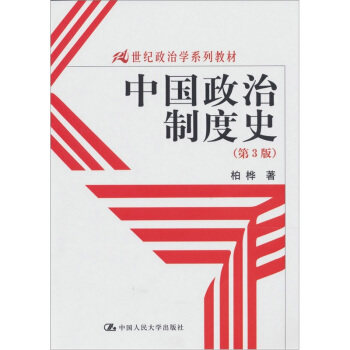

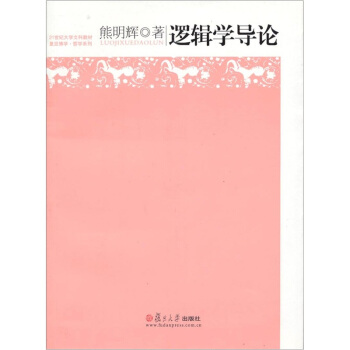
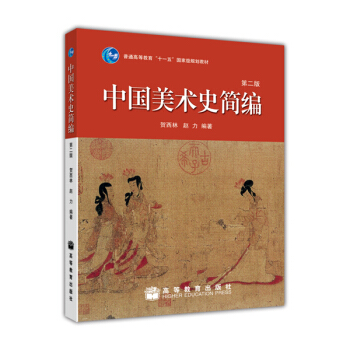


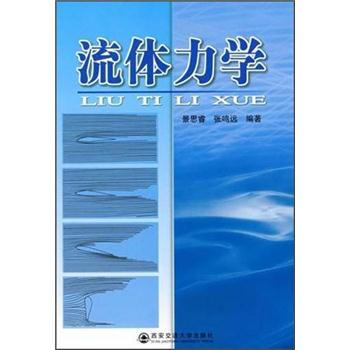
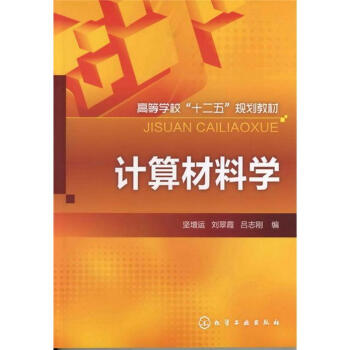
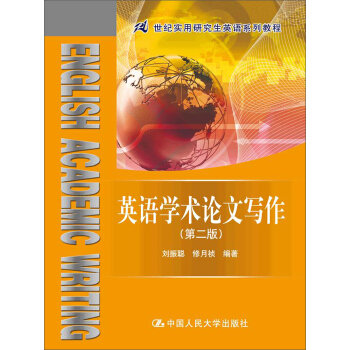
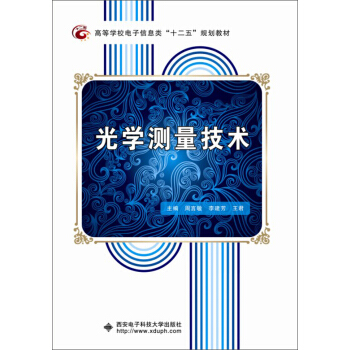
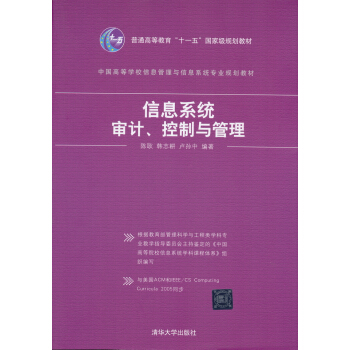
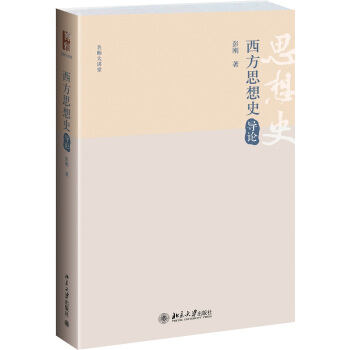


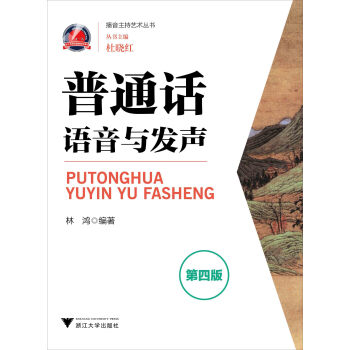
![医学细胞生物学(第七版)/“十二五”普通高等教育本科国家级规划教材 [Medical Cell Biology] pdf epub mobi 电子书 下载](https://pic.tinynews.org/11584930/5474536bNaa486fc3.jpg)

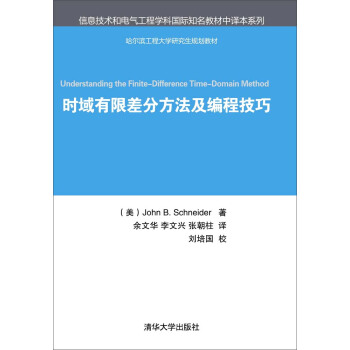
![工程伦理学 [Engineering Ethics] pdf epub mobi 电子书 下载](https://pic.tinynews.org/11673623/553c5458Ne43674e9.jpg)
